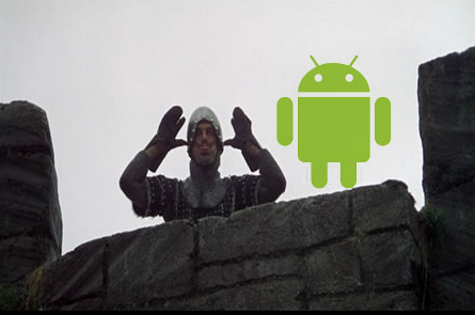What does the Nook need to be Ed Tech's e-book holy grail?


For those of you not familiar with the Nook, it's Barnes and Noble's first entry into the e-reader market. It's also the first such device to run Android, Google's open source operating system largely directed at mobile devices. Jason coined the term Kindroid for such a device a while ago and he and I have discussed it off and on, both in the context of the cool new mobile tech as well as in the context of education. Why? Because Android is wide open to developers; a decent community of coders with an interest in education could create some of those killer apps without too much effort. Textbook publishers could leverage much larger budgets to do some really interesting things for students and teachers.
Aside from Android, the Nook's key distinguishing feature is it's color LCD touch screen. The 3.5" screen compliments the monochrome e-ink display, allowing users to, for example, see the covers of their books in color or use gestures to navigate their libraries.
Boring!
This thing has built-in 3G and wireless! We can do better than color covers! Jason suggests mashups with social networking, virtual book clubs, and displays of related resources online. Reading A Feast for Crows? It wouldn't be rocket science to pull down George R. R. Martin's website so you can see if there's any chance he'll finish A Dance with Dragons sometime before hell freezes over. You get the point.
That's only scratching the surface, though, of what you could do with the right educational apps. Those high-resolution color pictures that look terrible in black and white e-ink but are essential to good textbooks could be displayed easily underneath the appropriate page of text. Textbook publishers could embed videos there as well, instead of relegating them to a CD on the back cover of a 5 pound book.
How about accessing an instructor's Google Wave that is filled with supplemental content and classroom discussion? Publishers and instructors could embed assessments throughout the text. In the world of standards-based instruction, links to relevant standards in your state or country and related curricula would be a simple matter. Where does the concept about which they are reading fit into the larger context of standards, frameworks, and an ultimate vision of the knowledge you want them to attain? Publishers could easily create state-/country-specific annotations to be displayed on the LCD that help teachers and students align with appropriate standards.
Most importantly, though, tie-ins to related content and social interactions over the texts elevate kids to the higher-order thinking skills so many gloss over in the age of Wikipedia, Sparknotes, and Google. How do we engage students in their readings and draw them into texts, whether fiction, non-fiction, or genuine textbooks? We make it social. Leverage the Android OS and the inherent connectivity, easy development (and plenty of developers, both in the open source community and elsewhere), and force students to make connections, ask (and answer) questions, and challenge each other.
The Nook probably isn't the holy grail of educational e-readers. The form factor, for one, is not quite ideal and color e-ink would help, even with high-resolution color capability on the touch screen. No one has tackled DRM either. However, the "Kindroid" platform that the Nook represents means that development can begin in earnest on a new generation of instructional texts. If the Nook gets opened up to developers as Jason suggests, they can lay the groundwork for a real revolution in e-readers for ed and textbooks with which digital natives can literally and figuratively engage.